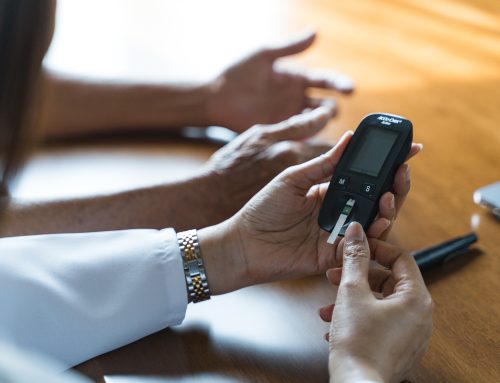Chronic wounds, burns, and complex injuries can be challenging to heal. When the body struggles to close wounds naturally, advanced medical solutions can help accelerate recovery. One of the most effective options used by wound care specialists today is the allograft. If you’re looking to understand what allografts are and how they can improve healing, this guide breaks down their role, uses, and key benefits of allografts in wound care.
What Is an Allograft?
An allograft is a tissue graft taken from a donor of the same species — typically human — and used to treat another person. In wound care, allografts usually consist of skin, dermis, or other tissue layers that have been carefully processed and sterilized for safety and effectiveness.
Unlike autografts, where tissue comes from the patient’s own body, allografts provide an external source of healthy tissue. This can be life-changing for patients who do not have enough viable tissue available for grafting or whose health conditions make autografting difficult.
Allografts undergo strict screening, preparation, and preservation to ensure they are safe and ready to promote healing when applied to a wound. Modern processing methods remove cellular material that could trigger rejection while keeping the natural structure of the tissue intact to support the healing process.
How Allografts Work in Wound Healing
The science behind allografts is fascinating and powerful. When applied to a wound, the allograft serves as a biological scaffold that supports the body’s natural repair mechanisms. Here’s how it helps:
-
Protection — Allografts act as a temporary barrier, shielding the wound from bacteria and external contaminants that could lead to infection.
-
Moisture retention — They create a balanced, moist wound environment, which is proven to speed up tissue repair and reduce scarring.
-
Cellular signaling — The graft’s structure helps stimulate the patient’s own cells to migrate, attach, and rebuild new, healthy tissue.
-
Pain reduction — Covering nerve endings and protecting exposed tissue helps decrease discomfort and sensitivity in the wound area.
This combination of protection, stimulation, and comfort makes allografts an invaluable option for patients with complex or slow-healing wounds.
Types of Allografts Used in Wound Care
Modern wound care offers several types of allografts tailored to different healing needs:
-
Skin allografts — Often used for burns and large wounds, these provide immediate coverage and protection while supporting new skin growth.
-
Dermal allografts — Focus on regenerating the deeper skin layers, ideal for ulcers and surgical wounds.
-
Amniotic membrane allografts — Derived from donated placental tissue, these contain natural growth factors and anti-inflammatory properties that help accelerate healing and reduce scar tissue formation.
Choosing the right type of allograft depends on the wound’s location, depth, cause, and the patient’s overall health.
Conditions That Benefit from Allografts
Allografts have become a critical tool for wound care specialists because they can help treat a wide range of injuries and chronic conditions, including:
-
Burn injuries — Provides immediate wound coverage to prevent infection and fluid loss.
-
Diabetic foot ulcers — Encourages tissue regeneration and helps close wounds resistant to standard care.
-
Venous leg ulcers — Supports healing where poor circulation makes natural recovery difficult.
-
Pressure injuries (bedsores) — Protects and promotes tissue repair in areas with limited blood supply.
-
Traumatic wounds and surgical sites — Aids in closing complex or large wounds post-surgery or after severe injury.
For many patients, especially those with compromised immune systems or poor circulation, allografts offer hope when traditional methods are not enough.
Benefits of Allografts in Wound Care
1. Accelerated Healing
One of the most significant benefits of allografts is their ability to speed up wound closure. The natural tissue structure helps new cells grow faster while reducing inflammation and promoting better blood flow.
2. Reduced Pain and Discomfort
By covering exposed nerve endings and protecting wounds, allografts help relieve pain and make the healing process more comfortable for patients.
3. Lower Risk of Infection
Acting as a protective barrier, allografts shield wounds from bacteria and contaminants that could cause infection or delay healing.
4. Versatility in Complex Cases
Allografts can be applied to many wound types, including burns, chronic ulcers, and traumatic injuries. They offer flexibility when other treatments fail.
5. Minimized Scarring
Because allografts maintain a moist, protected healing environment and support natural tissue regeneration, patients often experience less scarring compared to other treatment methods.
6. No Additional Surgery Required
Unlike autografts, which require harvesting tissue from the patient’s own body, allografts spare patients from extra surgical wounds, pain, and recovery time.
Allografts vs. Other Wound Care Options
Compared to synthetic dressings or skin substitutes, human allografts provide a biologically compatible structure that integrates naturally with the patient’s tissue. While synthetic options can protect the wound, they don’t deliver the same cellular communication and healing signals that living tissue provides.
Compared to autografts, allografts eliminate the need for a second wound site, making them especially helpful for patients with limited donor tissue or those who cannot undergo additional surgery.
What to Expect with Allograft Treatment
For patients, the process of receiving an allograft is straightforward and safe:
-
Evaluation — A wound care specialist assesses the wound’s size, depth, and cause.
-
Preparation — The wound is cleaned and prepared to ensure the graft will adhere properly.
-
Application — The allograft is placed directly on the wound and secured with dressings.
-
Follow-up care — The graft integrates with the patient’s tissue while the wound is monitored for healing progress.
Recovery time varies depending on the wound type and patient health, but many notice faster healing and improved comfort after treatment begins.
Final Thoughts
Allografts in wound care represent a major advancement in modern medicine, offering faster healing, infection protection, and pain relief for complex wounds. Whether treating severe burns, diabetic ulcers, or post-surgical injuries, allografts help restore tissue health and improve quality of life without additional surgery.
If you’re struggling with a wound that won’t heal or facing a complicated recovery, talk to a wound care specialist about whether an allograft treatment could be the right solution. With their proven safety and remarkable healing benefits, allografts are changing the future of wound care for patients everywhere.






